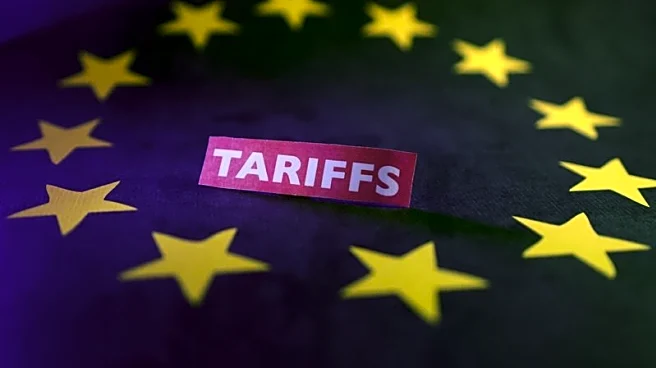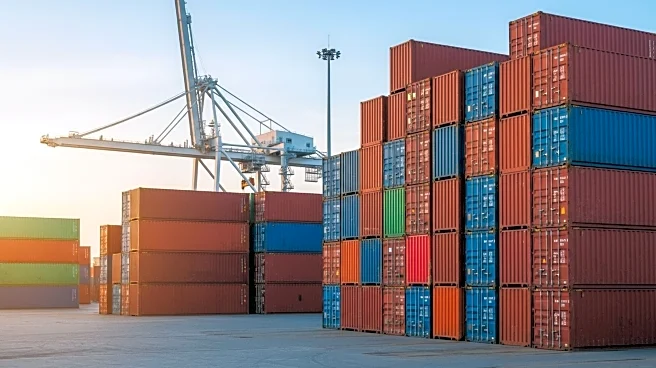What is the story about?
What's Happening?
Trump-era tariffs are prompting companies to diversify their sourcing strategies, reducing reliance on single countries like China. Over the next decade, global trade is expected to become more regionalized and digitized, influenced by political alliances and technological advancements. Companies are increasingly focusing on supplier diversity and resilience rather than just cost efficiency. Nearshoring, particularly to Mexico, is seen as a beneficial strategy, while reshoring to the U.S. is expected to be limited to specific sectors such as electronics and biotechnology. The tariffs have created a complex environment, likened to a geopolitical chessboard, where strategic risk is inherent in every move.
Why It's Important?
The shift in supply chain strategies due to tariffs has significant implications for U.S. industries and the global economy. Companies that adapt by diversifying suppliers and embracing technology will likely gain a competitive edge. This transformation could lead to increased domestic manufacturing and a more balanced trade environment. However, the complexity introduced by tariffs may also result in higher costs and inflationary pressures. The long-term impact includes potential threats to geopolitical stability and tech supply chains, which could affect currency valuation and economic resilience.
What's Next?
As companies continue to navigate the challenges posed by tariffs, they are expected to invest in technologies that enhance supply chain visibility and flexibility. The focus will be on building resilient networks that can withstand political uncertainties and disruptions. The trend towards regionalization and nearshoring is likely to persist, with Latin America emerging as a key player in the supply chain landscape. Businesses will need to balance compliance, security, and cost optimization to thrive in this evolving environment.
AI Generated Content
Do you find this article useful?















